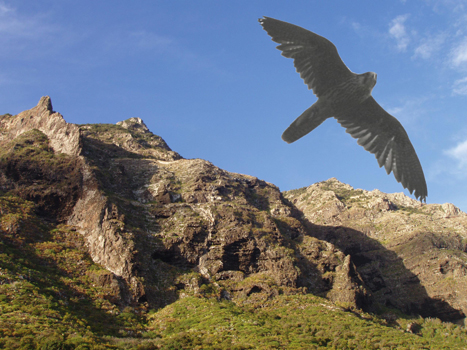The specific spatial distribution and habitat association are major issues in ecology and conservation. Nesting sites of five cliff-nesting raptors (Egyptian vulture [a locally extinct species], common buzzard, osprey, common kestrel, Barbary falcon), and common raven were located and georeferenced on one of the most biodiverse hotspot within the Canary Islands (Teno, Tenerife). Raptor abundance increased with slope, shrub-covered area, and habitat diversity, and decreased with altitude, and forested and grassed areas. Richness increased with slope and decreased with altitude. Threatened species (osprey, Barbary falcon, and raven) occupied cliffs farther away from houses and roads, and more rugged areas than the non-threatened species. Teno holds between 75% and 100% of the insular breeding populations of the most endangered species (osprey and raven), indicating the high conservation value of this area. This study suggests that the preservation of rugged terrains and areas of low human pressure are key factors for raptor conservation and provide basic knowledge on the community structure and habitat associations to develop appropriated management actions for these fragile island populations. información[at]ebd.csic.es: Rodríguez et al (2017) Factors affecting the spatial distribution and breeding habitat of an insular cliff-nesting raptor community. Curr Zool https://doi.org/10.1093/cz/zox005
https://academic.oup.com/cz/article-lookup/doi/10.1093/cz/zox005

 Las altas temperaturas están provocando que las lagunas y las marismas de Doñana pierdan agua rápidamente
Las altas temperaturas están provocando que las lagunas y las marismas de Doñana pierdan agua rápidamente




